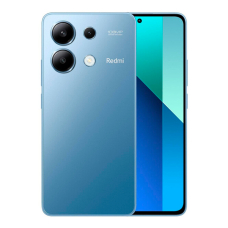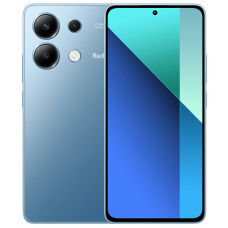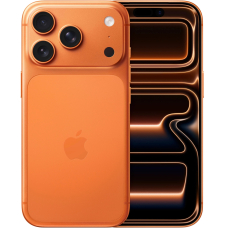Xiaomi continually surprises with its ability to produce affordable and reliable smartphones. In our analysis, we will explore the Redmi Note 13 4G and its "twelfth" predecessor. At first glance, these devices seem similar, but there are key differences between them. In this article, we will detail aspects of their design, displays, technical parameters, and cameras.
Design
In terms of appearance, both models have an attractive modern design. Both smartphones are made of plastic, but the thirteenth model features some improvements in ergonomics. For example, its dimensions are slightly smaller—162.3 x 75.6 x 8 mm, while the predecessor measures 165.7 x 76 x 7.8 mm. Despite the minimal increase in thickness of the Note 13 4G, it is still lighter, making it a bit more convenient for one-handed use. The new model has reduced bezels around the display, increasing the screen-to-body ratio to 89%, giving it a more modern and aesthetically pleasing look.
Both smartphones are protected by Corning Gorilla Glass 3, which provides reliable protection against scratches and minor damage. However, the main difference lies in the improved tactile sensations: the new gadget feels slightly more premium than its predecessor due to higher-quality assembly and better rear panel coating.
Display
The displays of both models are one of their main advantages. Both smartphone models are equipped with large 6.67-inch AMOLED screens that provide rich and clear images with a resolution of 2400x1080 pixels. Thanks to such high resolution, pictures, videos, and photos look very detailed and realistic, creating a high-quality and enjoyable visual experience. Both devices feature screens with a refresh rate of 120 Hz, ensuring exceptionally smooth interaction. Whether you are scrolling through pages or watching videos, movements on the screen appear without delays and tears.
The new model surpasses the previous version due to increased peak brightness of the display, reaching 1000 nits, which significantly improves visibility in sunlight. Meanwhile, the earlier model boasts an even higher brightness figure of 1200 nits, ensuring even better readability in bright lighting conditions. This difference may seem insignificant, but when used under direct sunlight or in bright lighting, the screen of the new model performs better.
Additionally, the fresh version has slightly improved color reproduction and contrast thanks to more modern display calibration. This makes colors richer and more realistic, which is especially noticeable when viewing photos and video content.
Technical Specifications
Both models are equipped with the same processor—the Qualcomm Snapdragon 685. This powerful octa-core chipset, built on a 6nm process, ensures stable operation of the devices, easily handling both everyday tasks and games at medium graphics settings. Both smartphones support multitasking well and run on Android 13, which is enhanced by Xiaomi's custom MIUI interface, providing convenience and flexibility in usage.
A significant difference between these models lies in the available memory configurations. The new model offers more powerful options—from 6 to 8 GB of RAM and up to 256 GB of internal storage. In contrast, the twelfth smartphone is offered with a minimum configuration—only 4 GB of RAM and 64 GB of built-in memory. Both gadgets support memory expansion via microSD card, which is an advantage for users in need of additional storage space.
It is also worth noting that the older device features a newer version of Bluetooth—5.1, while its younger counterpart uses Bluetooth 5.0. This minor improvement can affect the stability and range of connection with wireless devices such as headphones or smartwatches.
Battery
Both smartphone models are equipped with 5000 mAh batteries, allowing comfortable use of the devices throughout the day without recharging. Additionally, both devices support 33W fast charging, allowing for quick battery replenishment to continue active use of the device.
Despite the same battery capacity, the new model may offer slightly better power optimization thanks to the new operating system and more advanced power-saving settings. This can provide an advantage of several additional hours of usage depending on the scenario.
Cameras
One of the most significant improvements in the new smartphone is its camera. The new model features a main camera with a resolution of 108 MP and an aperture of f/1.7, which is a substantial upgrade compared to the 50 MP of the previous version. This results in sharper and more detailed photos, especially in bright lighting. Additionally, the sensor is capable of capturing a wider dynamic range, positively impacting photo quality in challenging lighting conditions, such as shadows or sunset.
The front camera of the new model has also improved: its resolution has been increased to 16 MP, significantly enhancing the quality of selfies, making them clearer and more detailed compared to the 13 MP camera of the old version.
The additional camera modules of both models remain similar: an ultra-wide lens and a macro lens, suitable for capturing landscapes and detailed objects from close range. However, due to the more advanced main sensor in the updated version, the overall photographic power of the device is noticeably higher.





 0
0





 0
0





 0
0


























